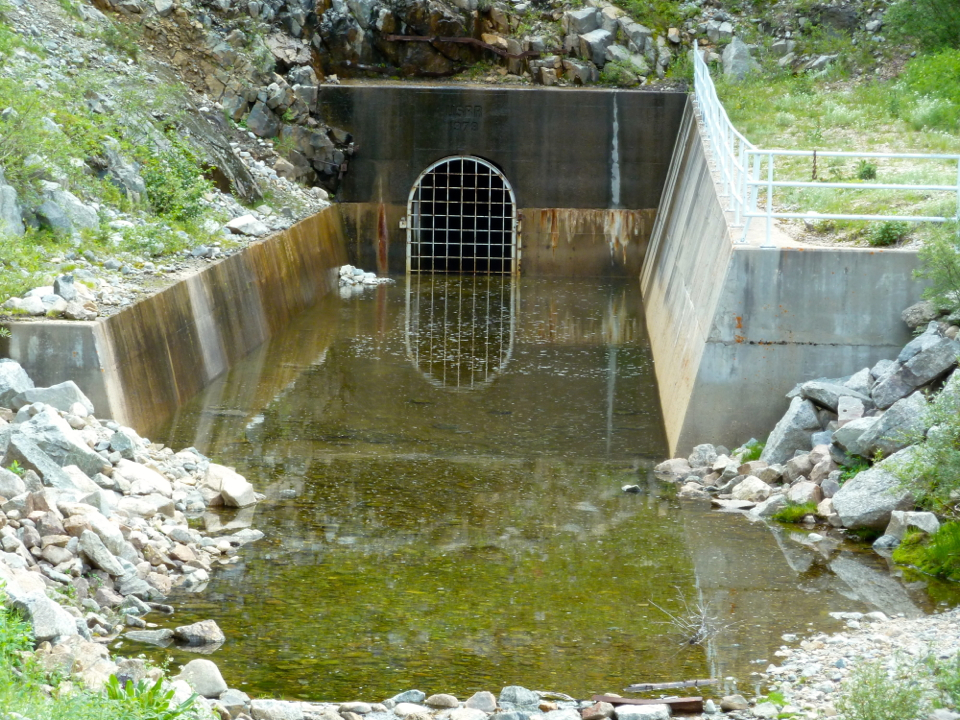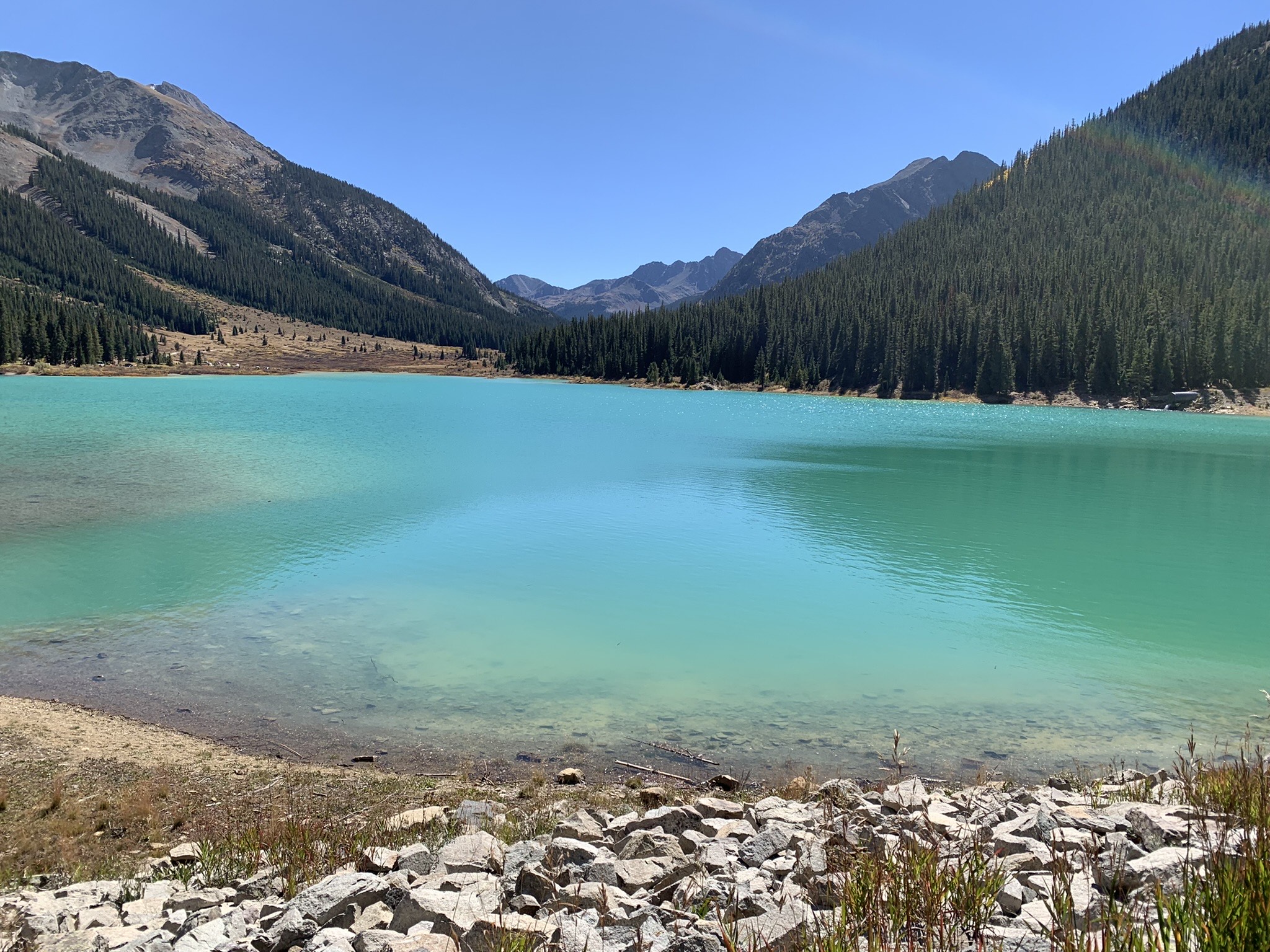Local rivers are seeing more water this summer because a high-alpine dam and reservoir maintenance project is preventing diversions to the Front Range.
The Twin Lakes Reservoir & Canal Co. will not take part in the usual movement of water known as the Twin Lakes exchange agreement this year because of a major maintenance project at Grizzly Reservoir. That means more water for the Western Slope — in Hunter Creek and the Roaring Fork River.
Officials say Grizzly Reservoir on Lincoln Creek will be mostly empty from July through October so that a liner can be installed on the upstream side of the dam, making it impossible to release water from the reservoir.
“This year, because of the work that we’re going to be doing at the dam, the company didn’t feel like we could commit to making the releases required under that agreement,” said Alan Ward, president of the company and division manager of water resources for Pueblo Water. “If we can’t do that, then the Fry-Ark system bypasses 3,000 acre-feet out of their diversions.”
The headwaters of the Roaring Fork are part of a highly engineered system that takes water from the Western Slope to cities and farms on the east side of the Continental Divide known as the Independence Pass Transmountain Diversion System. In a circular movement of water, in most years, the exchange agreement allows the company to release 3,000 acre-feet from Grizzly Reservoir down Lincoln Creek, while the same amount is taken from the headwaters of Hunter Creek to the east through the Fryingpan-Arkansas project. That 3,000 acre-feet is then delivered back to the reservoir company at Twin Lakes Reservoir.
Because the company won’t be able to make normal releases out of Grizzly this year due to the dam project, the water is not being taken from Midway or No Name creeks, meaning it’s left to flow downstream to Hunter Creek, and through Aspen to its confluence with the Roaring Fork. The extra flow began June 12 and continues through Thursday.
Another effect of the Grizzly Reservoir maintenance project is that the steep, mountainous drainages downstream of the reservoir that normally flow into a canal that runs to the reservoir — Brooklyn, Tabor and New York creeks — will instead be allowed to flow downstream, boosting flows in Lincoln Creek and the Roaring Fork for the entire summer. That could result in anywhere from an additional 20 to 80 acre-feet of water in Lincoln Creek over the season, according to Twin Lakes Reservoir & Canal Co. General Manager Stacey Sober.
“We are always excited to see the natural flows on the Roaring Fork and Hunter Creek supporting our riparian and aquatic environments,” Deputy Pitkin County Attorney Laura Makar said.
Twin Lakes also collects water from Lost Man Creek and the Roaring Fork and brings it into Grizzly Reservoir via a tunnel and canal system. Ward said the company plans to divert this water by using temporary dams that direct this flow through the Twin Lakes Tunnel. But later in the summer, the company plans to cease this diversion, too, and send the water downstream so that it can make repairs to the tunnel.

Fryingpan-Arkansas project
The Fryingpan-Arkansas project, which came about during the mid-20th century frenzy of dam building across the West, collects about 57,000 acre-feet of water a year from the headwaters of the Fryingpan River basin and the Hunter Creek basin and brings it east across the Continental Divide to the Arkansas River basin. The project is managed by the U.S. Bureau of Reclamation and the water is used by the Southeastern Colorado Water Conservancy District.
The details of the Twin Lakes exchange are laid out in the 1959 operating principles for the Fryingpan-Arkansas Project. According to Ward and Makar, the exchange was meant to lessen the impacts of another big transmountain diversion project in the headwaters of the Roaring Fork: the Twin Lakes system.
The Twin Lakes system, which was built in the 1930s before the Fry-Ark project, was already taking a large portion of the river’s flow. The system is normally able to divert up to 46,000 acre-feet annually, or nearly 40% of the Roaring Fork’s headwaters, and is an important source of water for the cities of Colorado Springs, Pueblo and Aurora. The exchange moves water from a tributary with more water to one with less, without causing a net loss to Front Range water users.
“It would make sense that the exchange was probably the start of requiring mitigation for transbasin diversion projects because we’ve seen what had happened in some of the other places,” Makar said. “There was big pushback on the Fryingpan-Arkansas Project in Pitkin County. … There was really a recognition that this can have a really serious consequence on the Western Slope.”

Grizzly Dam project
This summer, Twin Lakes Reservoir & Canal Co. plans to rehabilitate Grizzly Dam, Grizzly Reservoir’s outlet works and the headgate that controls the flow of water into Twin Lakes Tunnel. Crews will install a membrane over the steel face of the dam. The work, which was originally scheduled for last summer but was delayed until this year, is meant to address safety concerns with the 80-year-old infrastructure.
Ward said the company will begin drawing down the reservoir this week. It has already ceased taking water from the New York, Tabor and Brooklyn collection system, and those flows should be hitting Lincoln Creek and the Roaring Fork this week.
Most of the water in Grizzly Reservoir will be drawn down by taking it through Twin Lakes Tunnel. But about 60 acre-feet remain below the level of the tunnel intake, Ward said. This remaining water will be released down Lincoln Creek, and Ward said crews will take care to release the water slowly and not dump potentially contaminated sediment into the creek.
“I think there’s at least a reasonable suspicion that we may have some metals that are in the sediments of the lake,” Ward said. “And so we are going to let that water out really slowly to hopefully not pass much of that downstream on Lincoln Creek.”
After fish kills and instances of visibly discolored water, a 2023 Environmental Protection Agency report found that Lincoln Creek above Grizzly Reservoir is toxic to fish, with high metals concentrations, especially aluminum and copper. Experts say the source of contamination is a naturally occurring “mineralized tributary” that flows into Lincoln Creek and may be exacerbated by climate change as temperatures rise. Several agencies and nonprofit organizations are continuing water-quality monitoring, and a workgroup made up of local, state and federal officials has been meeting regularly to figure out next steps to address the contamination.
With a $15,000 grant from Pitkin County Healthy Rivers, staff from the Roaring Fork Conservancy are taking water samples this summer to determine if there are impacts to Lincoln Creek from the dam and reservoir maintenance project.
This story ran in the June 27 edition of The Aspen Times and the Grand Junction Daily Sentinel.

